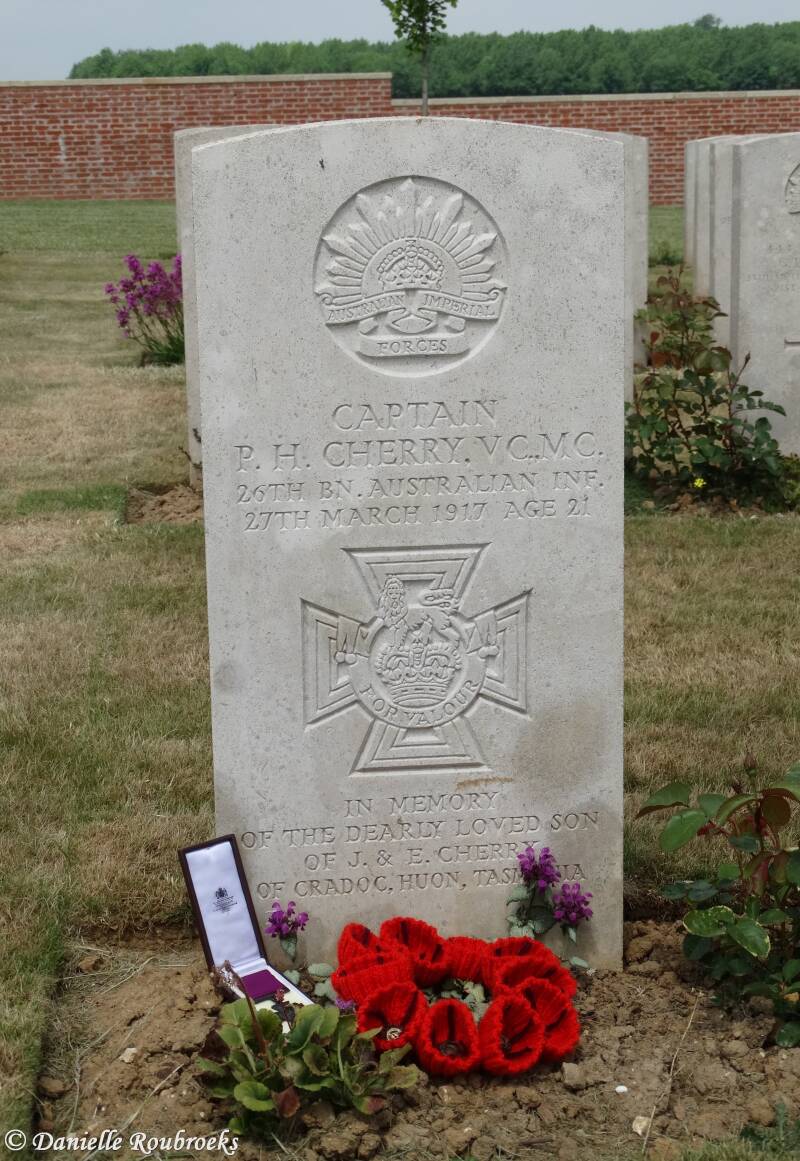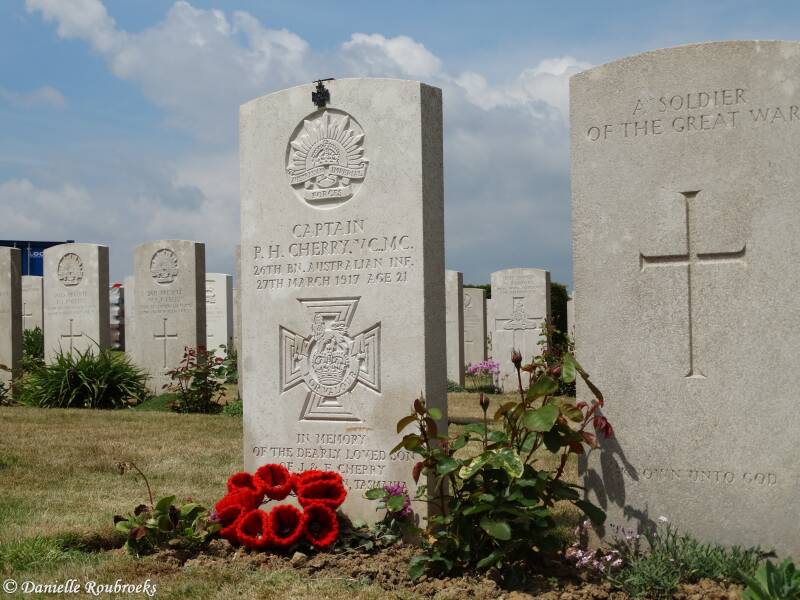Queant Road Cemetery, Buissy
Historical Information (Source: CWGC)
Buissy was reached by the Third Army on 2 September 1918, after the storming of the Drocourt-Queant line, and it was evacuated by the Germans on the following day. Queant Cemetery was made by the 2nd and 57th Casualty Clearing Stations in October and November 1918. It then consisted of 71 graves (now Plot I, Rows A and B), but was greatly enlarged after the Armistice when 2200 graves were brought in from the battlefields of 1917-1918 between Arras and Bapaume, and from smaller burial grounds in the area.
There are now 2,377 Commonwealth servicemen of the First World War buried or commemorated in this cemetery. 1,441 of the burials are unidentified, but there are special memorials to 56 casualties known or believed to be buried among them. Other special memorials commemorate 26 casualties buried in German cemeteries in the neighbourhood, whose graves could not be found on concentration. The cemetery was designed by Sir Edwin Lutyens.
Served with
- United Kingdom (557)
- Australian (301)
- Canadian (82)
- German (2)
- New Zealand (1)
Served in
- Army (884)
- Navy (44)
- Air Force (15)
VICTORIA CROSS
Citation
An extract from the "London Gazette," dated 11th May, 1917, records the following:-"For most conspicuous bravery, determination and leadership when in command of a company detailed to storm and clear a village. After all the officers of his company had become casualties he carried on with care and determination in the face of fierce opposition, and cleared the village of the enemy. He sent frequent reports of progress made, and when held up for some time by an enemy strong point, he organised machine gun and bomb parties and captured the position. His leadership, coolness and bravery set a wonderful example to his men. Having cleared the village, he took charge of the situation and beat off the most resolute and heavy counter-attacks made by the enemy. Wounded about 6.30 a.m., he refused to leave his post, and there remained, encouraging all to hold out at all costs, until, about 4.30 p.m. this very gallant officer was killed by an enemy shell."
Grave Reference: VIII. C. 10.
(Source: Wikipedia)


























